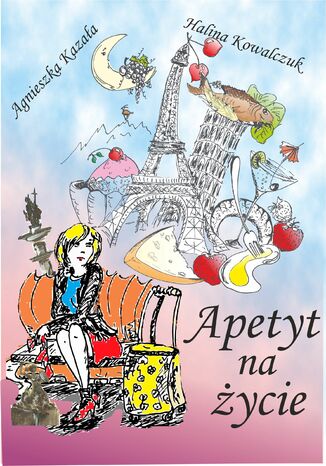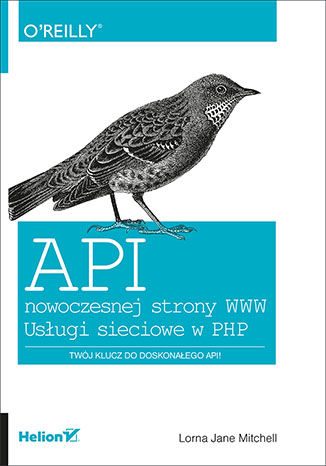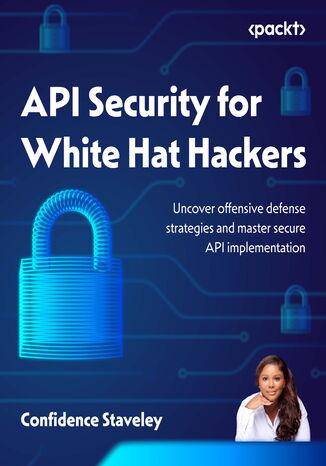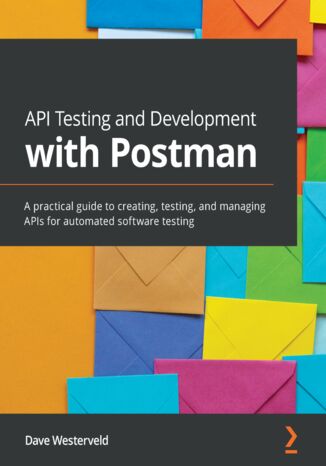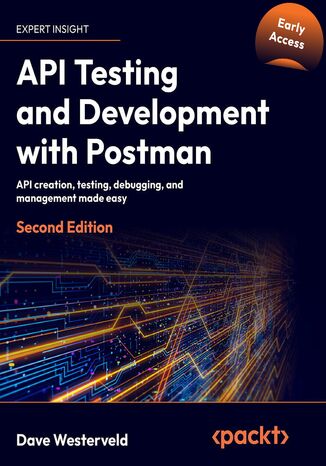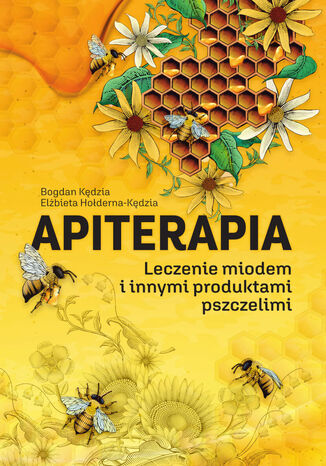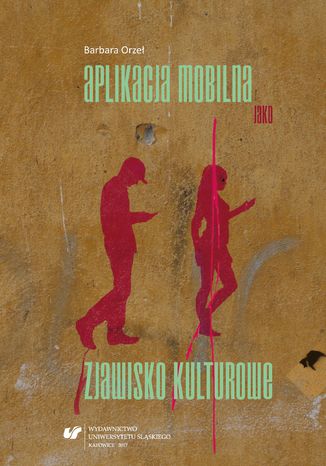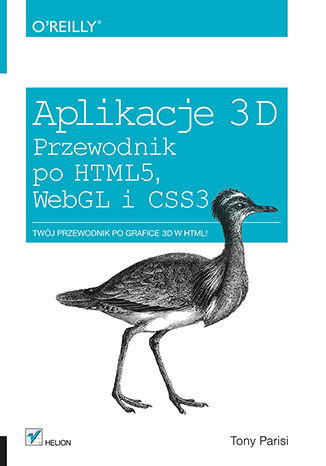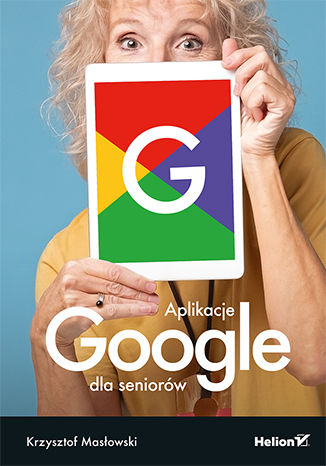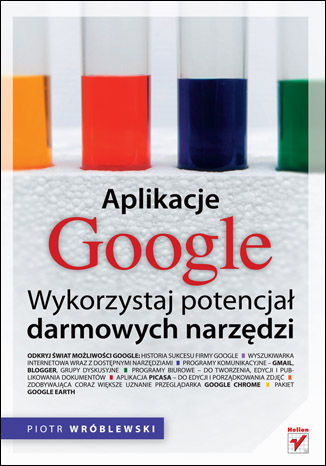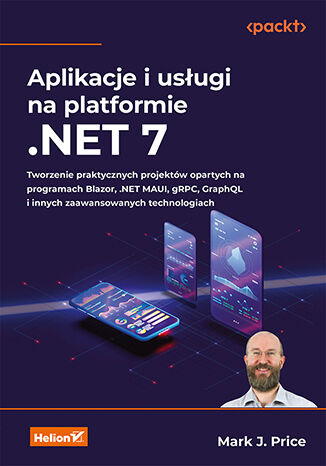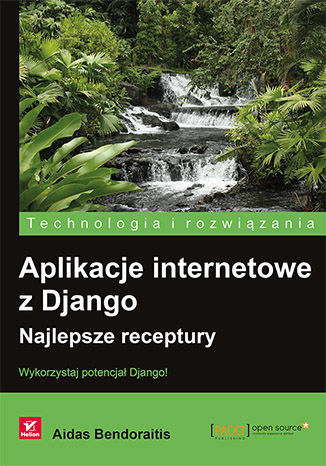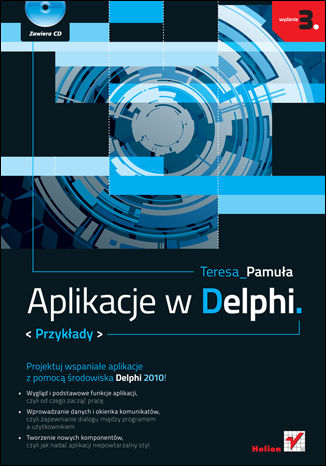Категорії
Електронні книги
-
Бізнес та економіка
- Біткойн
- Ділова жінка
- Коучинг
- Контроль
- Електронний бізнес
- Економіка
- Фінанси
- Фондова біржа та інвестиції
- Особисті компетенції
- Комп'ютер в офісі
- Комунікація та переговори
- Малий бізнес
- Маркетинг
- Мотивація
- Мультимедійне навчання
- Нерухомість
- Переконання та НЛП
- Податки
- Соціальна політика
- Порадники
- Презентації
- Лідерство
- Зв'язки з громадськістю
- Звіти, аналізи
- Секрет
- Соціальні засоби комунікації
- Продаж
- Стартап
- Ваша кар'єра
- Управління
- Управління проектами
- Людські ресурси (HR)
-
Для дітей
-
Для молоді
-
Освіта
-
Енциклопедії, словники
-
Електронна преса
- Architektura i wnętrza
- Безпека життєдіяльності
- Biznes i Ekonomia
- Будинок та сад
- Електронний бізнес
- Ekonomia i finanse
- Езотерика
- Фінанси
- Особисті фінанси
- Бізнес
- Фотографія
- Інформатика
- Відділ кадрів та оплата праці
- Для жінок
- Комп'ютери, Excel
- Бухгалтерія
- Культура та література
- Наукові та академічні
- Охорона навколишнього середовища
- Впливові
- Освіта
- Податки
- Подорожі
- Психологія
- Релігія
- Сільське господарство
- Ринок книг і преси
- Транспорт та спедиція
- Здоров'я та краса
-
Історія
-
Інформатика
- Офісні застосунки
- Бази даних
- Біоінформатика
- Бізнес ІТ
- CAD/CAM
- Digital Lifestyle
- DTP
- Електроніка
- Цифрова фотографія
- Комп'ютерна графіка
- Ігри
- Хакування
- Hardware
- IT w ekonomii
- Наукові пакети
- Шкільні підручники
- Основи комп'ютера
- Програмування
- Мобільне програмування
- Інтернет-сервери
- Комп'ютерні мережі
- Стартап
- Операційні системи
- Штучний інтелект
- Технологія для дітей
- Вебмайстерність
-
Інше
-
Іноземні мови
-
Культура та мистецтво
-
Шкільні читанки
-
Література
- Антології
- Балада
- Біографії та автобіографії
- Для дорослих
- Драми
- Журнали, щоденники, листи
- Епос, епопея
- Нарис
- Наукова фантастика та фантастика
- Фельєтони
- Художня література
- Гумор, сатира
- Інше
- Класичний
- Кримінальний роман
- Нехудожня література
- Художня література
- Mity i legendy
- Лауреати Нобелівської премії
- Новели
- Побутовий роман
- Okultyzm i magia
- Оповідання
- Спогади
- Подорожі
- Оповідна поезія
- Поезія
- Політика
- Науково-популярна
- Роман
- Історичний роман
- Проза
- Пригодницька
- Журналістика
- Роман-репортаж
- Romans i literatura obyczajowa
- Сенсація
- Трилер, жах
- Інтерв'ю та спогади
-
Природничі науки
-
Соціальні науки
-
Шкільні підручники
-
Науково-популярна та академічна
- Археологія
- Bibliotekoznawstwo
- Кінознавство / Теорія кіно
- Філологія
- Польська філологія
- Філософія
- Finanse i bankowość
- Географія
- Економіка
- Торгівля. Світова економіка
- Історія та археологія
- Історія мистецтва і архітектури
- Культурологія
- Мовознавство
- літературні студії
- Логістика
- Математика
- Ліки
- Гуманітарні науки
- Педагогіка
- Навчальні засоби
- Науково-популярна
- Інше
- Психологія
- Соціологія
- Театральні студії
- Богослов’я
- Економічні теорії та науки
- Transport i spedycja
- Фізичне виховання
- Zarządzanie i marketing
-
Порадники
-
Ігрові посібники
-
Професійні та спеціальні порадники
-
Юридична
- Безпека життєдіяльності
- Історія
- Дорожній кодекс. Водійські права
- Юридичні науки
- Охорона здоров'я
- Загальне, компендіум
- Академічні підручники
- Інше
- Закон про будівництво і житло
- Цивільне право
- Фінансове право
- Господарське право
- Господарське та комерційне право
- Кримінальний закон
- Кримінальне право. Кримінальні злочини. Кримінологія
- Міжнародне право
- Міжнародне та іноземне право
- Закон про охорону здоров'я
- Закон про освіту
- Податкове право
- Трудове право та законодавство про соціальне забезпечення
- Громадське, конституційне та адміністративне право
- Кодекс про шлюб і сім'ю
- Аграрне право
- Соціальне право, трудове право
- Законодавство Євросоюзу
- Промисловість
- Сільське господарство та захист навколишнього середовища
- Словники та енциклопедії
- Державні закупівлі
- Управління
-
Путівники та подорожі
- Африка
- Альбоми
- Південна Америка
- Центральна та Північна Америка
- Австралія, Нова Зеландія, Океанія
- Австрія
- Азії
- Балкани
- Близький Схід
- Болгарія
- Китай
- Хорватія
- Чеська Республіка
- Данія
- Єгипет
- Естонія
- Європа
- Франція
- Гори
- Греція
- Іспанія
- Нідерланди
- Ісландія
- Литва
- Латвія
- Mapy, Plany miast, Atlasy
- Мініпутівники
- Німеччина
- Норвегія
- Активні подорожі
- Польща
- Португалія
- Інше
- Przewodniki po hotelach i restauracjach
- Росія
- Румунія
- Словаччина
- Словенія
- Швейцарія
- Швеція
- Світ
- Туреччина
- Україна
- Угорщина
- Велика Британія
- Італія
-
Психологія
- Філософія життя
- Kompetencje psychospołeczne
- Міжособистісне спілкування
- Mindfulness
- Загальне
- Переконання та НЛП
- Академічна психологія
- Психологія душі та розуму
- Психологія праці
- Relacje i związki
- Батьківство та дитяча психологія
- Вирішення проблем
- Інтелектуальний розвиток
- Секрет
- Сексуальність
- Спокушання
- Зовнішній вигляд та імідж
- Філософія життя
-
Релігія
-
Спорт, фітнес, дієти
-
Техніка і механіка
Аудіокниги
-
Бізнес та економіка
- Біткойн
- Ділова жінка
- Коучинг
- Контроль
- Електронний бізнес
- Економіка
- Фінанси
- Фондова біржа та інвестиції
- Особисті компетенції
- Комунікація та переговори
- Малий бізнес
- Маркетинг
- Мотивація
- Нерухомість
- Переконання та НЛП
- Податки
- Соціальна політика
- Порадники
- Презентації
- Лідерство
- Зв'язки з громадськістю
- Секрет
- Соціальні засоби комунікації
- Продаж
- Стартап
- Ваша кар'єра
- Управління
- Управління проектами
- Людські ресурси (HR)
-
Для дітей
-
Для молоді
-
Освіта
-
Енциклопедії, словники
-
Електронна преса
-
Історія
-
Інформатика
-
Інше
-
Іноземні мови
-
Культура та мистецтво
-
Шкільні читанки
-
Література
- Антології
- Балада
- Біографії та автобіографії
- Для дорослих
- Драми
- Журнали, щоденники, листи
- Епос, епопея
- Нарис
- Наукова фантастика та фантастика
- Фельєтони
- Художня література
- Гумор, сатира
- Інше
- Класичний
- Кримінальний роман
- Нехудожня література
- Художня література
- Mity i legendy
- Лауреати Нобелівської премії
- Новели
- Побутовий роман
- Okultyzm i magia
- Оповідання
- Спогади
- Подорожі
- Поезія
- Політика
- Науково-популярна
- Роман
- Історичний роман
- Проза
- Пригодницька
- Журналістика
- Роман-репортаж
- Romans i literatura obyczajowa
- Сенсація
- Трилер, жах
- Інтерв'ю та спогади
-
Природничі науки
-
Соціальні науки
-
Науково-популярна та академічна
-
Порадники
-
Професійні та спеціальні порадники
-
Юридична
-
Путівники та подорожі
-
Психологія
- Філософія життя
- Міжособистісне спілкування
- Mindfulness
- Загальне
- Переконання та НЛП
- Академічна психологія
- Психологія душі та розуму
- Психологія праці
- Relacje i związki
- Батьківство та дитяча психологія
- Вирішення проблем
- Інтелектуальний розвиток
- Секрет
- Сексуальність
- Спокушання
- Зовнішній вигляд та імідж
- Філософія життя
-
Релігія
-
Спорт, фітнес, дієти
-
Техніка і механіка
Відеокурси
-
Бази даних
-
Big Data
-
Biznes, ekonomia i marketing
-
Кібербезпека
-
Data Science
-
DevOps
-
Для дітей
-
Електроніка
-
Графіка / Відео / CAX
-
Ігри
-
Microsoft Office
-
Інструменти розробки
-
Програмування
-
Особистісний розвиток
-
Комп'ютерні мережі
-
Операційні системи
-
Тестування програмного забезпечення
-
Мобільні пристрої
-
UX/UI
-
Веброзробка, Web development
-
Управління
Подкасти
Wymienione zamki w drzwiach i tajemnicza, atrakcyjna blondynka, która wygląda na wyjątkowo zadowoloną - to zdecydowanie nie jest dobry znak! Magda właśnie odkryła, że jej wielka miłość przeszła do historii i Robert... po prostu "wymienił ją na lepszy model". Jak się pozbierać po takiej katastrofie? Z pomocą niezawodnej przyjaciółki Kaśki Magda powoli staje na nogi. Los jednak nie pozwala jej wytchnąć i musi zmierzyć się z kolejnymi kłopotami oraz emocjami, które budzi w niej pewien sympatyczny mężczyzna. Czy uda jej się poukładać życie na własnych zasadach? Marta Nowik w pełnej humoru, optymizmu i wzruszeń powieści dowodzi, że czasem to, co wydaje się końcem, może być tak naprawdę dopiero początkiem. Bo na miłość nigdy nie jest za późno, ale na samotność zawsze za wcześnie! Wydanie książki z dużą, czytelną czcionką.
Apetyt na rzeczywistość. Między literaturą a dziennikarstwem - relacje interakcje perspektywy
Agnieszka Kłosińska-Nachin, Ewa Kobyłecka-Piwońska
Publikacja jest zbiorem artykułów eksplorujących relacje między dziennikarstwem a literaturą z różnych perspektyw i w różnych obszarach językowych. Wobec postępującej w ostatnich dziesięcioleciach kontaminacji między dziennikarstwem a literaturą autorzy tekstów pochylają się nad historycznymi związkami między badanymi dziedzinami (począwszy od starożytności do czasów najbardziej współczesnych), stawiają pytania dotyczące kontekstów kulturowych determinujących badaną ekspresję, przyglądają się typowym dla niej środkom wyrazu, wychwytują nieuniknioną hybrydyzację form oraz kreślą sylwetki konkretnych dziennikarzy-pisarzy. Wartością dodaną jest zderzenie perspektyw badawczych w odniesieniu do różnych kręgów kulturowych (hiszpański, latynoamerykański, francuski, bułgarski, polski, amerykański, angielski, germański, klasyczny, włoski). Takie ujęcie prowadzi do wieloaspektowej problematyzacji niezwykle aktualnego wymiaru współczesnej kultury.
Agnieszka Kazała, Halina Kowalczuk
W tej opowieści nikt nie zginął, nikt nie został zamordowany, nikt się nie zakochał i nie zmarniał z tęsknoty. To opowieść o tym, że warto żyć i cieszyć się każdą chwilą, którą możemy spędzić z kimś bliskim. Cieszyć się tym, co mamy i tym, co możemy przeżywać. Łapać każdą chwilę i rozkoszować się nią zanim zniknie. I chociaż postacie bohaterek nie do końca są prawdziwe, trochę wyimaginowane i trochę przekoloryzowane, to jednak podobne do każdego z nas, kto chciałby spróbować czasem czegoś innego, czegoś nowego. Czy to potrawy, czy podróży, czy rozmowy z drugim człowiekiem. Czasem brakuje nam odwagi, ale wystarczy szczery uśmiech, aby przełamać lody i wyjść naprzeciw prawdziwej przygodzie, jaką jest życie. I brać je z prawdziwym apetytem. Apetytem na życie. I smakować!
Apetyt turysty. O doświadczaniu świata w podróży
Książka poddaje refleksji siły kulturotwórcze, dzięki którym turystyka przybiera zmienne społecznie i historycznie kształty, a mimo to wciąż pozostaje sobą. Opowiada o strategiach, do jakich jednostki oraz społeczności uciekają się, by nadać podróżniczym doświadczeniom znamię autentyczności. Ukazuje też tworzenie się tkanki wyobrażeń, oczekiwań i przekonań, decydujących zarówno o tym, w jaki sposób podróżujemy, jak i o sensach nadawanych temu o przedsięwzięciu. Zmierza do odpowiedzi na pytanie: na czym polega powiązanie zjawisk określanych mianem turystycznych z życiem społeczno-kulturowym.
Apex is an on-demand programming language providing a complete set of features for building business applications – including data models and objects to manage data. Apex being a proprietor programming language from Salesforce to be worked with multi tenant environment is a lot different than traditional OOPs languages like Java and C#. It acts as a workflow engine for managing collaboration of the data between users, a user interface model to handle forms and other interactions, and a SOAP API for programmatic access and integration.Apex Design Patterns gives you an insight to several problematic situations that can arise while developing on Force.com platform and the usage of Design patterns to solve them. Packed with real life examples, it gives you a walkthrough from learning design patterns that Apex can offer us, to implementing the appropriate ones in your own application. Furthermore, we learn about the creational patterns that deal with object creation mechanism and structural patterns that helps to identify the relationship between entities. Also, the behavioural and concurrency patterns are put forward explaining the communication between objects and multi-threaded programming paradigm respectively. We later on, deal with the issues regarding structuring of classes, instantiating or how to give a dynamic behaviour at a runtime, with the help of anti-patterns. We learn the basic OOPs principal in polymorphic and modular way to enhance its capability. Also, best practices of writing Apex code are explained to differentiate between the implementation of appropriate patterns. This book will also explain some unique patterns that could be applied to get around governor limits. By the end of this book, you will be a maestro in developing your applications on Force.com for Salesforce
Eine junge Archäologin gerät in ein Netz aus dunkler Besessenheit, Geheimnis und Verführung. Im antiken Griechenland bestand eine der zwölf Aufgaben von Herakles darin, einen goldenen Apfel aus dem Garten der Hesperiden zurückzubringen. Für die Archäologin Oriel Anderson scheint es ihr eigener goldener Apfel zu sein, als sie die Chance bekommt, sich einem Team griechischer Taucher auf der Insel Helios anzuschließen. Doch der Traum wird zum Albtraum, als sie den teuflischen Besitzer der Insel, Damian Lekkas, kennenlernt. Schockiert erinnert sie sich an eine romantische Nacht in den Armen eines Fremden vor sechs Jahren. Doch nun steht ein ganz anderer Mann vor ihr. Während sie die Schwerter kreuzen und Leidenschaften aufblühen, ist sich Oriel bewusst, dass böswillige Augen sie aus den Schatten heraus beobachten. Dunkle Gerüchte werden über die Familie Lekkas geflüstert. Welche Gefahren liegen in Helios verborgen, einem bezaubernden Land, in dem noch alte Rituale durchgeführt werden, um die Götter zu besänftigen, junge Männer ihr Leben in den tückischen Tiefen des Ionischen Meeres riskieren, und die brüchige Erde jeden Moment auseinanderbrechen kann? Wird Oriel die verborgenen Schätze finden, nach denen sie sucht? Oder wird Damians tragische Vergangenheit sie einholen und beide verschlingen?
API Analytics for Product Managers. Understand key API metrics that can help you grow your business
APIs are crucial in the modern market as they allow faster innovation. But have you ever considered your APIs as products for revenue generation?API Analytics for Product Managers takes you through the benefits of efficient researching, strategizing, marketing, and continuously measuring the effectiveness of your APIs to help grow both B2B and B2C SaaS companies. Once you've been introduced to the concept of an API as a product, this fast-paced guide will show you how to establish metrics for activation, retention, engagement, and usage of your API products, as well as metrics to measure the reach and effectiveness of documentation—an often-overlooked aspect of development.Of course, it's not all about the product—as any good product manager knows; you need to understand your customers’ needs, expectations, and satisfaction too. Once you've gathered your data, you’ll need to be able to derive actionable insights from it. This is where the book covers the advanced concepts of leading and lagging metrics, removing bias from the metric-setting process, and bringing metrics together to establish long- and short-term goals.By the end of this book, you'll be perfectly placed to apply product management methodologies to the building and scaling of revenue-generating APIs.
API nowoczesnej strony WWW. Usługi sieciowe w PHP
Twój klucz do doskonałego API! Za sukcesem i siłą najpopularniejszych serwisów w sieci często stoi decyzja o szerokim udostępnieniu API (ang. Application Programming Interface). Dzięki temu programiści z całego świata mogą tworzyć rozwiązania oparte na istniejących usługach, integrować różne systemy oraz tworzyć rozszerzenia. Sięgnij po tę książkę, naucz się korzystać z udostępnionego API i zbuduj własne. Poznaj tajniki budowania przyjaznego interfejsu API. Ta książka pomoże Ci zorientować się, jak działa protokół HTTP, jakie metody udostępnia oraz jakie informacje możesz znaleźć w nagłówkach. Po opanowaniu podstaw przejdziesz do najpopularniejszych formatów wymiany informacji pomiędzy systemami — JSON oraz XML. Zaznajomisz się też z usługami SOAP, RPC i REST. Na sam koniec dowiesz się, jak projektować niezawodne usługi oraz obsługiwać błędy. Jeżeli chcesz, żeby Twoje API zainteresowało innych programistów, musisz zadbać o jego dobrą dokumentację. Zdobądź niezbędną wiedzę o PHP! Poznasz protokół HTTP, czasowniki cyklu żądań i odpowiedzi oraz nagłówki i ciasteczka. Dowiesz się, kiedy lepiej jest użyć formatu JSON, a kiedy XML. Nauczysz się tworzyć usługi typu RPC, SOAP i RESTful. Poznasz wiele narzędzi i technik diagnozowania usług sieciowych HTTP. Nauczysz się wybierać najlepszy rodzaj usługi dla swoich aplikacji i dowiesz się, jak tworzyć niezawodne usługi sieciowe. Nauczysz się dokumentować swoje interfejsy API — oraz projektować w nich mechanizmy obsługi błędów. Zbuduj API zgodne z oczekiwaniami innych programistów!
Confidence Staveley, Christopher Romeo
APIs have evolved into an essential part of modern applications, making them an attractive target for cybercriminals. Written by a multi-award-winning cybersecurity leader , this comprehensive guide offers practical insights into testing APIs, identifying vulnerabilities, and fixing them.With a focus on hands-on learning, this book guides you through securing your APIs in a step-by-step manner. You'll learn how to bypass authentication controls, circumvent authorization controls, and identify vulnerabilities in APIs using open-source and commercial tools. Moreover, you'll gain the skills you need to write comprehensive vulnerability reports and recommend and implement effective mitigation strategies to address the identified vulnerabilities. This book isn't just about hacking APIs; it's also about understanding how to defend them. You'll explore various API security management strategies and understand how to use them to safeguard APIs against emerging threats.By the end of this book, you'll have a profound understanding of API security and how to defend against the latest threats. Whether you're a developer, security professional, or ethical hacker, this book will ensure that your APIs are secure and your organization's data is protected.
Postman enables the exploration and testing of web APIs, helping testers and developers figure out how an API works. With Postman, you can create effective test automation for any APIs. If you want to put your knowledge of APIs to work quickly, this practical guide to using Postman will help you get started.The book provides a hands-on approach to learning the implementation and associated methodologies that will have you up and running with Postman in no time. Complete with step-by-step explanations of essential concepts, practical examples, and self-assessment questions, this book begins by taking you through the principles of effective API testing. A combination of theory coupled with real-world examples will help you learn how to use Postman to create well-designed, documented, and tested APIs. You'll then be able to try some hands-on projects that will teach you how to add test automation to an already existing API with Postman, and guide you in using Postman to create a well-designed API from scratch.By the end of this book, you'll be able to use Postman to set up and run API tests for any API that you are working with.
Postman is an invaluable tool for exploration and testing of web APIs and helping testers and developers figure out how an API works. With Postman, you can create effective test automation for any APIs, and this guide will help you unleash its full potential.API Testing and Development with Postman is an invaluable resource for anyone who wants to create a good quality API, but isn't sure how to go about it. This guide will help you unleash the full potential of Postman’s test automation capabilities.A combination of theory coupled with real-world examples will help you learn how to use Postman to create well-designed, documented, and tested APIs. After you’ve familiarized yourself with the theory, you’ll move on to hands-on projects that will teach you how to add test automation to an existing API. You’ll also learn some of the new and powerful features that Postman has that can help you avoid introducing bugs.This second, fully updated edition features new chapters on workflow testing, creating and using mock servers, API security testing, and performance testing. The new and expanded information in this edition will help you future-proof your APIs.By the end of this book, you'll be able to use Postman to set up and run API tests for any API that you are working with.
Apikosmetyka. Miód, propolis, pyłek kwiatowy, mleczko pszczeli, jad pszczeli, wosk
Bogdan Kędzia, Elżbieta Hołderna-Kędzia
„Apikosmetyka” to kolejna – po „Produktach pszczelich w trudnych do leczenia chorobach dermatologicznych” oraz „Produktach pszczelich w leczeniu chorób serca i układu krążenia” – książka autorstwa prof. Bogdana Kędzi i mgr Elżbiety Hołdernej-Kędzi dotycząca właściwości i możliwości wykorzystania produktów pszczelich. W trzeciej części serii autorzy skupili się na wykorzystaniu miodu, propolisu, pyłku kwiatowego, wosku, jadu oraz mleczka pszczelego w kosmetyce. W książce, oprócz rzetelnej wiedzy naukowej dotyczącej produktów pszczelich, można znaleźć przepisy na maseczki, kremy, odżywki czy emulsje z wykorzystaniem tych produktów.
Apiterapia - naturalne leczenie miodem
Miód jest jednym z największych dobrodziejstw natury. To nie tylko smaczny i odżywczy pokarm, lecz także cenny składnik wykorzystywany w apiterapii, czyli w leczeniu miodem i produktami pszczelimi. Skutecznie chroni organizm przed chorobami, a w przypadku ich wystąpienia wspomaga kurację. Jego różnorodność pozwala na dobranie konkretnego gatunku do danego schorzenia, dając możliwość skutecznego działania. Książka Apiterapia. Leczenie miodem i produktami pszczelimi przybliża ten fascynujący temat, będący przedmiotem niesłabnącego zainteresowania lekarzy i ośrodków naukowych na całym świecie.
Apiterapia. Leczenie miodem i innymi produktami pszczelimi
Miód jest jednym z największych dobrodziejstw natury. To nie tylko smaczny i odżywczy pokarm, lecz także cenny składnik wykorzystywany w apiterapii, czyli w leczeniu miodem i produktami pszczelimi. Skutecznie chroni organizm przed chorobami, a w przypadku ich wystąpienia wspomaga kurację. Jego różnorodność pozwala na dobranie konkretnego gatunku do danego schorzenia, dając możliwość skutecznego działania. Książka Apiterapia. Leczenie miodem i produktami pszczelimi przybliża ten fascynujący temat, będący przedmiotem niesłabnącego zainteresowania lekarzy i ośrodków naukowych na całym świecie.
Thriller, slasher i kryminał w jednym. Budzi grozę i zaskakuje. Na rynku pojawia się nowa aplikacja służąca do czatowania z przyjaciółmi, a licealiści z miasteczka Honesdale ochoczo zabierają się do jej testowania. Przyjaciółki Hannah i Amber również pobierają nową apkę i zaczynają konwersację. Zaczepiają także wbudowanego w program bota, który podobno ma zwyczaj podawania dziwnych odpowiedzi Friend-Bot rzeczywiście nie odpowiada na pytania jak typowy przedstawiciel AI niepokojąco łatwo daje się wciągnąć w rozmowę na temat potencjalnego morderstwa Niedługo później miasto obiega zatrważająca informacja znaleziono ciało, które prawdopodobnie należało do Hannah, a Amber uznano za zaginioną. Ambitna dziennikarka Ellen chce za wszelką cenę znaleźć mordercę. Tymczasem rówieśnicy ofiar w kółko zadają sobie pytania: Kto zabił Hannah? Czy jestem w gronie podejrzanych? Czy mordercą może być bot?
Aplikacja mobilna jako zjawisko kulturowe
Książka Aplikacja mobilna jako zjawisko kulturowe skierowana jest do wszystkich użytkowników nowych mediów. Stanowi przewodnik po kulturowych fundamentach zagadnień związanych z informatyką, kreacją programów komputerowych oraz szeroko pojętym nowomedialnym biznesem. Opisuje najważniejsze pojęcia związane z aplikacjami mobilnymi: algorytmem, interfejsem, personalizacją oraz kreacją nowych zachowań komunikacyjnych. Autorka rozpoczyna swoje rozważania przywołaniem najważniejszych pojęć dotyczących programu komputerowego oraz prezentacji jego historii. Ważną część monografii zajmują refleksje nad kulturowymi aspektami programowania – pojęciem algorytmu oraz recepcją języków programowania w świetle hipotezy Sapira-Whorfa. W kolejnych rozdziałach analizie poddano kwestie interfejsu (cross-platformowości, tzw. „strategii trzech ekranów”), konsumpcji nowych mediów mobilnych, gier komputerowych (problem przejścia od konsoli do kanału mobilnego) oraz zagadnienie personalizacji i kastomizacji doświadczenia użytkownika. W ostatniej części książki zaprezentowano nowe zachowania komunikacyjne, które powstały w związku z wprowadzeniem aplikacji do różnych dziedzin życia (e-czytelnictwo, inteligentne domy). Podjęte w monografii problemy kierują dyskurs w stronę zmian w kulturowej percepcji aplikacji mobilnych, transformacji pojęć oraz możliwych kierunków zapośredniczonych przez nie przemian.
Aplikacje 3D. Przewodnik po HTML5, WebGL i CSS3
Twój przewodnik po grafice 3D w HTML! Do niedawna wywietlanie zaawansowanej grafiki 3D w przeglądarce internetowej wymagało zainstalowania dodatkowych wtyczek oraz poznawania nowych narzędzi. Dzięki HTML5 i WebGL te czasy powoli odchodzą w niepamięć! Teraz możesz wykorzystać niesamowite możliwoci tego duetu, by zaskoczyć użytkowników atrakcyjnymi efektami 3D! Ta wyjątkowa książka została w całoci powięcona włanie zagadnieniom związanym z grafiką 3D w przeglądarce internetowej. Sięgnij po nią i przekonaj się, jak wykorzystać API WebGL do renderowania trójwymiarowej grafiki w czasie rzeczywistym. W kolejnych rozdziałach poznasz bibliotekę języka JavaScript Three.js, która w znaczący sposób ułatwia życie programisty. Informacje zawarte w dalszych rozdziałach pozwolą Ci skorzystać z zaawansowanych efektów w CSS3 i tworzyć animacje trójwymiarowe. Zaznajomisz się też z detalami tworzenia aplikacji dla urządzeń mobilnych. Twoją uwagę z pewnocią przykuje przegląd narzędzi do tworzenia trójwymiarowych modeli i animacji zarówno tych klasycznych, jak i tych online. Książka ta jest doskonałą lekturą dla wszystkich deweloperów chcących wzbogacić swój warsztat o elementy grafiki 3D. Dzięki tej książce: zapoznasz się z podstawami teorii dla grafiki 3D poznasz API WebGL wykorzystasz bibliotekę Three.js w codziennej pracy odkryjesz narzędzia przydatne w codziennej pracy jeszcze bardziej uatrakcyjnisz Twoją stronę Poznaj potencjał HTML5 w zakresie grafiki 3D! "Tony Parisi od samego początku wiedzie prym w dziedzinie rewolucyjnych rozwiązań pozwalających zagościć interaktywnym aplikacjom trójwymiarowym w internecie. Jego nowa książka zawiera dogłębne informacje na temat tych technologii oraz tworzenia najnowocześniejszych trójwymiarowych aplikacji naprawdę działających w aktualnie dostępnych przeglądarkach". - Neil Trevett, wiceprezes ds. treści mobilnej w firmie NVIDIA i prezes organizacji Khronos Group
Google, czyli współczesny świat Konkretnie - świat wirtualny. Wyszukiwarka pod adresem google.com wystartowała w roku 1997. Osiągnęła spektakularny sukces, ponieważ jej twórcy zaprojektowali algorytm, który pozwolił nie tylko wyszukiwać strony www zawierające poszukiwane przez użytkownika treści, ale także sam je selekcjonował. Od najbardziej do najmniej wartościowych. Oczywiście - "zdaniem" algorytmu, ale i tak faktem jest, że Google ułatwił życie osobom korzystającym z internetu w celu odnalezienia konkretnych informacji. A że liczba stron i bitów danych, jakie zawiera sieć stale rośnie, to i popularność wyszukiwarki google.com staje się większa i większa. Inne wyszukiwarki mogą jedynie "pomarzyć" o takim statusie - np. w Polsce aż 97% bywalców internetu korzysta z Google. Jednak uniwersum firmy Google to o wiele więcej, niż tylko maszyna do selekcjonowania danych z sieci. Firma zawiadująca marką stale pracuje nad tym, by dostarczyć klientom nowych, co ciekawe - najczęściej nieodpłatnych narzędzi, ułatwiających funkcjonowanie w obecnym, coraz mocniej "wirtualnym" świecie. I tak, Google na dziś to m.in.: Tłumacz, pozwalający zrozumieć teksty i słowa w kilkudziesięciu językach Mapy, dzięki którym nie zgubimy się w żadnym niemal kraju świata Bardzo przyjazna w użytkowaniu poczta Gmail Konto i dysk Google, gdzie można bezpiecznie zapisywać zdjęcia i inne pliki Z oferty Google korzystać można za pośrednictwem komputera i telefonu. Jest on zatem z nami właściwie wszędzie - gdziekolwiek się udamy. Wszędzie i zawsze gotów jest służyć nam pomocą. O ile oczywiście poznamy jego aplikacje i nauczymy się ich używać. Najszybciej i najskuteczniej - dzięki tej książce, napisanej prostym, przystępnym językiem, bez informatycznej nowomowy i nadmiaru niepotrzebnych informacji. Właściwa selekcja danych - to podstawa!
Aplikacje Google. Wykorzystaj potencjał darmowych narzędzi
Odkryj świat możliwości Google Historia sukcesu firmy Google Wyszukiwarka internetowa wraz z dostępnymi narzędziami Programy komunikacyjne — Gmail, Blogger, grupy dyskusyjne Programy biurowe — do tworzenia, edycji i publikowania dokumentów Aplikacja Picasa — do edycji i porządkowania zdjęć Zdobywająca coraz większe uznanie przeglądarka Google Chrome Pakiet Google Earth Wyobraź sobie, że siadasz z kubkiem kawy przed nowym laptopem, firmowanym znakiem zgodności z technologią Google. Uruchamia się system operacyjny, podpisany "Google OS". Otwierasz przeglądarkę Google Chrome, sprawdzasz pocztę Gmail. Dostajesz instrukcje, jak zmodyfikować arkusz kalkulacyjny, wchodzisz więc na Google Docs i nanosisz zmiany. W wolnej chwili przeglądasz zdjęcia od znajomej, która zamieściła je w internetowym albumie Google Picasa. Za dużo Google? Sprawdź, może w lodówce sytuacja wygląda inaczej. Wszystko zaczęło się od wyszukiwarki internetowej, stworzonej przez dwóch zapaleńców. Konkurencyjnej wyszukiwarki. Dzięki innowacyjności oraz doskonałej jakości zdobyła ona dominującą pozycję na rynku, pokonując produkty znanych firm. I to właśnie z tym świeżym podejściem powinno kojarzyć Ci się Google. Przełomowa poczta — Gmail, a także dokumenty online to efekt pracy rzeszy pracowników firmy o otwartych i kreatywnych umysłach, nie tłamszonych sztywnymi regułami koncernów. Dziś laboratoria Google wymyślają nowe usługi, eksplorują następne regiony. Kolejne produkty Google są wygodne, szybkie i po prostu ułatwiają pracę. Oswajaj się więc z wszechobecną nazwą tej firmy, poznaj jej produkty i za darmo korzystaj z ich niezwykłego potencjału! Dlaczego internauci wybrali Google? Jak stawiać pierwsze kroki w Google i nie poślizgnąć się? Czym jest wyszukiwanie wyspecjalizowane i "inteligentne"? Jak odkryć świat blogerów? Na co odpowiada Google Answers? Z czym jeść nowości z kuchni Google Labs? Czym jest konto Google? Dlaczego wszyscy chcą mieć konto Gmail? Jak stworzyć album zdjęciowy w Picasa? Czy nauczysz się geografii z Google Earth? Jak wygląda Internet w przeglądarce Chrome?
C# i wieloplatformowy framework .NET sprawiają, że praca programisty jest efektywna i satysfakcjonująca. Podobnie jak w wypadku innych zaawansowanych technologii, nauka obsługi .NET może sprawić sporo trudności. Wielu deweloperów odkrywa, że oficjalna dokumentacja nie wystarczy do nabrania wprawy w tworzeniu złożonych projektów. To książka przeznaczona dla programistów zaznajomionych z podstawami języka C# i platformy .NET, chcących zdobyć umiejętność tworzenia rzeczywistych aplikacji i usług. Opisuje wyspecjalizowane biblioteki, które umożliwiają monitorowanie i zwiększanie wydajności aplikacji, zabezpieczanie ich wraz z danymi, a także internacjonalizowanie ich kodu. Zawiera również omówienie najnowszych rozwiązań, bibliotek i technologii w połączeniu z ich praktycznym zastosowaniem ― między innymi Web API, OData, gRPC, GraphQL, SignalR i Azure Functions. Nie zabrakło prezentacji technik pracy z .NET MAUI, programu, który służy do tworzenia aplikacji mobilnych dla systemów iOS i Android, a także stacjonarnych dla systemów Windows i macOS. Najciekawsze zagadnienia: wydajność, bezpieczeństwo i skalowalność aplikacji i usług specjalistyczne biblioteki .NET i biblioteki zewnętrzne, takie jak Serilog i FluentValidation tworzenie wielosystemowych aplikacji i ich integracja z natywnymi funkcjami mobilnych systemów operacyjnych stosowanie różnych technologii, między innymi bibliotek komponentów Blazor praca z danymi w bazach SQL Server i Cosmos DB Aplikacje w .NET, wydajne, skalowalne, bezpieczne - poznaj najnowsze rozwiązania!
Aplikacje internetowe z Django. Najlepsze receptury
Ponad 70 praktycznych gotowych rozwiązań do tworzenia wielojęzykowych, responsywnych i skalowalnych witryn internetowych przy użyciu systemu Django Django to szkielet napisany w języku Python, pozwalający na błyskawiczne tworzenie zaawansowanych aplikacji internetowych. Dostarcza on wielu narzędzi, które przyśpieszają i znacząco ułatwiają pracę programisty. Wśród nich znajdziesz system szablonów, system mapowania obiektowo-relacyjnego oraz automatyczny interfejs do zarządzania treścią. Ale to nie wszystko! Przekonaj się, co jeszcze potrafi Django. Ta książka jest doskonałym źródłem informacji na temat tego systemu. Wiedza, którą za chwilę zdobędziesz, przedstawiona jest w formie receptur. Kolejne rozdziały to świetne przepisy na: zarządzanie zależnościami, tworzenie struktury bazy danych, projektowanie formularzy i przetwarzanie pozyskanych z nich danych oraz korzystanie z systemów szablonów. Dowiesz się stąd, jak tworzyć własne filtry i znaczniki w szablonach, modelować panel administracyjny oraz korzystać z Django CMS. Poznasz także system mapowania obiektowo-relacyjnego oraz wdrożysz aplikację na serwerze. Dzięki tym znakomitym przepisom możesz błyskawicznie nauczyć się pracować z Django oraz uruchomić swoją pierwszą aplikację napisaną z jego wykorzystaniem! Z książki tej nauczysz się: Prawidłowo konfigurować projekty Django Budować strukturę bazy danych z domieszek modelowych wielokrotnego użytku Zarządzać strukturami hierarchicznymi przy użyciu algorytmu MPTT Wykorzystywać skrypty JavaScript w responsywnych szablonach Tworzyć filtry i znaczniki szablonowe nadające się do wykorzystania w każdym projekcie Konfigurować panel administracyjny Rozszerzać system Django CMS o własne składniki Poznaj moc języka Python w tworzeniu aplikacji internetowych!
Aplikacje mobilne dla studenta i technika programisty
Wojciech Jaśkowiec, Krzysztof Kułacz, Marta Kanafa-Suchan
Książka Aplikacje Mobilne dla studenta i technika programisty to jest przeznaczona dla każdego kto chce zapoznać się z tematem tworzenia aplikacji mobilnych dla systemu Android. W pierwszej części książki czytelnik zapoznaje się z tajnikami Języka Java. Dogłębnie zapoznaje się z tematyką: programowania obiektowego, oraz współbieżnego. Poruszane są w niej zagadnienia m.in.: klas, obiektów jak i wątków. W drugiej części zapoznajemy się z tworzeniem aplikacji mobilnych w środowisku Android Studio. Strona wizualna aplikacji tworzona jest z wykorzystaniem języka znaczników xml. Zaś język Java odpowiada za sterowanie działaniem aplikacji. Książka stanowi szczegółowy poradnik dla każdego kto jest zainteresowany tworzeniem Aplikacji Mobilnych.
Aplikacje w Delphi. Przykłady. Wydanie III
Projektuj wspaniałe aplikacje z pomocą środowiska Delphi 2010! Wygląd i podstawowe funkcje aplikacji, czyli od czego zacząć pracę Wprowadzanie danych i okienka komunikatów, czyli zapewnianie dialogu między programem a użytkownikiem Tworzenie nowych komponentów, czyli jak nadać aplikacji niepowtarzalny styl Środowisko Delphi służy do szybkiego tworzenia aplikacji działających w systemie Windows. Zawiera bogate biblioteki komponentów, mechanizmy Plug and Play oraz Code Insight, a także palety komponentów i narzędzia ułatwiające ich wyszukiwanie. Dzięki Delphi IDE można w prosty sposób zaprojektować interfejs użytkownika nowej aplikacji, określić jej wygląd oraz sposób działania w oparciu o istniejące kontrolki i biblioteki klas, w dużym stopniu zdając się na automatyczne generowanie kodu. Jeśli chcesz poznać, dogłębnie zrozumieć i wykorzystać do swoich celów sposób działania Delphi 2010, powinieneś koniecznie sięgnąć po książkę "Aplikacje w Delphi. Przykłady". Znajdziesz tu wszelkie informacje na temat obsługi samego środowiska, podstawowych składników każdej tworzonej aplikacji, wprowadzania i formatowania danych, list, tabel, grupowania i projektowania nowych komponentów, wykorzystania technologii OLE do zapisu i modyfikacji danych w formatach .doc i .xls, możliwości graficznej prezentacji danych, ich drukowania i współpracy Twojej aplikacji z multimediami. Wszystko to oraz wiele innych zagadnień pokazano tu na praktycznych, konkretnych przykładach, ułatwiających zrozumienie i gotowych do zastosowania w Twoich własnych projektach. Podstawowe składniki aplikacji, menu główne i podręczne, pasek narzędzi Wprowadzanie danych, formatowanie i wyświetlanie na ekranie Okienka komunikatów i okienka dialogowe z karty Dialogs Listy wyboru i prosty edytor Grupowanie i dynamiczne tworzenie komponentów Komponenty do wyboru daty i czasu, odmierzanie czasu Zakładki TTabControl i TPageControl Grafika w Delphi i wyświetlanie obrazów Tabelaryzacja danych i ich graficzna prezentacja danych Współpraca programu z plikami dyskowymi Drukowanie w Delphi i programy z wieloma oknami Posługiwanie się wieloma komponentami tego samego typu Definiowanie nowych klas komponentów i wykorzystanie mechanizmu OLE Podstawowe operacje na bazach danych Delphi i multimedia Odkryj fantastyczne możliwości Delphi!
Apokalipsa czyli sport motorowodny
Wybór najlepszych opowiadań sensacyjno - obyczajowych z bestsellerowego tomu ,,Kompot ze świeżego nieboszczyka" i niepublikowanych z lat 1999-2001. Sceneria schyłkowej komuny i lat 90. minionego wieku, kiedy miliarderzy stawali się milionerami, telefon komórkowy był jeszcze wynalazkiem, a polonez powszechnym, nieobciachowym środkiem transportu. Bezbarwni bohaterowie z ulicy zmuszeni do uporania się z fortuną wygraną w totolotka, poszukiwania żony znikającej w toalecie czy dźwigania walizy z poćwiartowanymi zwłokami. Wspólnym mianownikiem opowiadań jest zaskakująca puenta i szczypta wariactwa, które objawia się wisielczym humorem, groteską i skłonnością do makabry. Spis treści Od autora Apokalipsa czyli sport motorowodny Tajemnicze nazwisko Szczepana Próba personelu Lekcja afrykańskiego Kolekcjoner zębów Romans brylantowej wdowy Miliarderzy Reportaż Poskromić Brunera Ludojad Bal sylwestrowy Pyton w płaszczu przeciwdeszczowym Kompot ze świeżego nieboszczyka Chwyt poniżej pasa Zamach Kamuflaż Wysłannik mafii Dymisja Ucho Raz do roku Podróż



